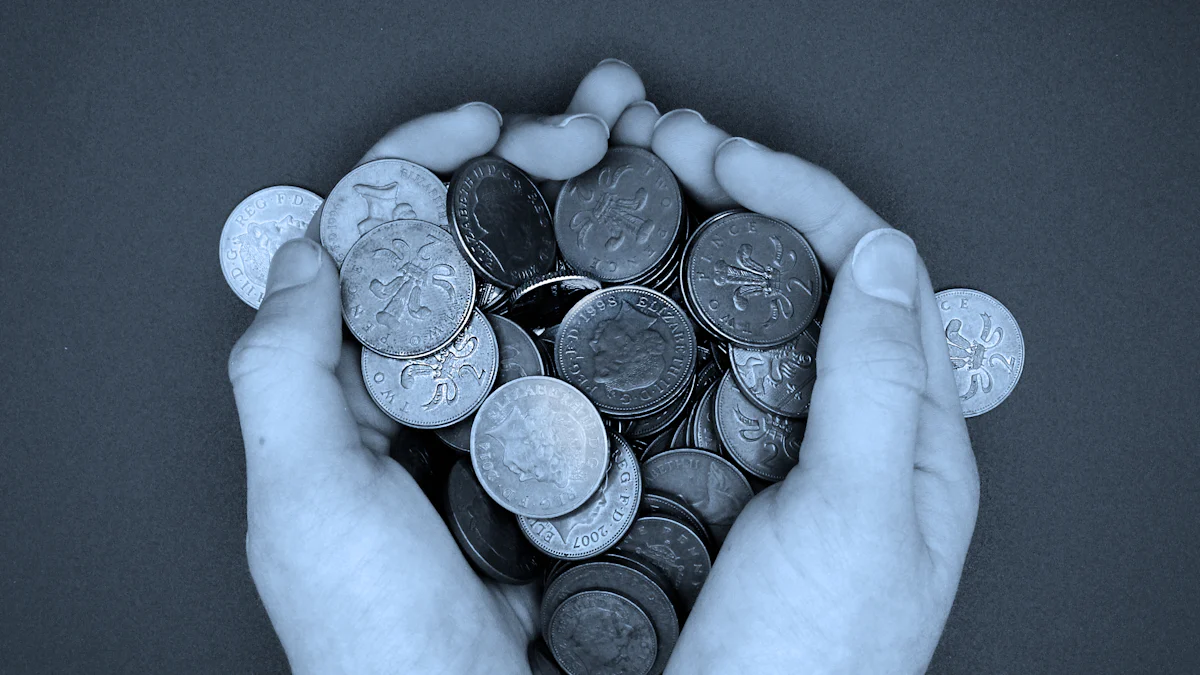How a Fed Rate Cut Impacts Your Savings and Investments

When the Fed announces a rate cut, it’s not just a headline—it’s a ripple that touches your financial life. Your savings might earn less interest, while loans like mortgages or auto financing could become more affordable. For example, recent rate cuts have lowered short-term interest rates by 50%, reducing borrowing costs but also shrinking returns on savings accounts. High-yield savings accounts, once offering over 5%, now hover below that mark. These changes can influence how you save, borrow, and invest. Understanding the impact of a fed rate cut helps you make smarter financial decisions.
Key Takeaways
A Fed rate cut lowers borrowing costs, making loans for homes and cars more affordable, which can help you manage your budget effectively.
Savings accounts may earn less interest after a rate cut, so consider exploring high-yield savings accounts or CDs to maximize your returns.
Refinancing your mortgage during a rate cut can lead to significant savings on monthly payments, especially if rates have dropped substantially.
Investors should adjust their portfolios to take advantage of lower rates, focusing on long-term bonds and dividend-paying stocks for better returns.
Staying informed and proactive about your financial options can help you navigate the changes brought by a Fed rate cut with confidence.
What Is a Fed Rate Cut and Why Does It Matter?
Understanding the Federal Reserve Rate Cut
A federal reserve rate cut happens when the Fed lowers its key interest rate, known as the federal funds rate. This rate determines how much banks charge each other for overnight loans. When the Fed reduces this rate, it’s aiming to influence broader economic conditions. For example, during a recent cycle, the Fed cut short-term interest rates three times, including a significant half-point reduction in September. This brought the low end of the federal funds rate down from 5.25% to 4.25%. These adjustments are part of the Fed’s dual mandate to keep inflation low and unemployment under control. By cutting rates, the Fed encourages borrowing and spending, which can help boost economic growth.
Why the Fed Implements a Rate Cut
The Fed doesn’t cut rates randomly. It’s a strategic move to address specific economic challenges. When unemployment rises or economic activity slows, the Fed steps in to stimulate growth. Lower rates make borrowing cheaper for businesses and consumers, which can lead to increased spending and investment. For instance, falling interest rates can make it easier for you to afford a mortgage or refinance an existing loan. At the same time, the Fed keeps an eye on inflation, aiming to maintain it near the 2% target. A rate cut signals that the Fed prioritizes supporting employment and economic stability.
Economic and Consumer Impacts of a Rate Cut
A rate cut affects both the economy and your wallet. In the short term, you’ll notice lower borrowing costs for big purchases like homes or cars. Credit card interest rates might also drop, offering some relief if you carry a balance. However, savings accounts and money market accounts may earn less interest. High-yield savings accounts, which once offered over 5%, are now dipping below that mark. In the long run, lower rates can encourage spending but may reduce the returns on your savings and investments. Here’s a quick breakdown:
Effect Type | Short-Term Impact | Long-Term Impact |
|---|---|---|
Borrowing Costs | Lower borrowing costs for large purchases like homes and cars. | Potential increase in consumer debt if spending rises. |
Consumer Behavior | Increased consumption due to cheaper loans. | Possible decrease in savings rates as consumers spend more. |
Savings Interest | Reduced interest earnings on savings accounts. | Long-term lower returns on savings and investments. |
Understanding these impacts helps you make smarter financial decisions. Whether you’re saving, borrowing, or investing, a Fed rate cut reshapes the financial landscape in ways you can’t ignore.
How a Fed Rate Cut Impacts Savings Accounts

Traditional Savings Accounts and Lower Rates
When the Fed cuts its rate, traditional savings accounts often feel the pinch. Banks adjust their deposit rates to align with the Fed’s moves. This means the interest you earn on your savings may drop. For example:
High-yield savings accounts, which once offered over 5%, are now dipping below that mark.
Some banks have even reduced their rates to under 4%.
Lower rates can make it harder to grow your money in these accounts. If you rely on savings products for steady returns, this shift might feel discouraging. However, traditional savings accounts still offer safety and liquidity, making them a reliable option for short-term goals or emergency funds.
Money Market Accounts and Declining Yields
Money market accounts, another popular savings option, also take a hit during a Fed rate cut. These accounts typically offer slightly higher interest than traditional savings accounts, but they’re not immune to declining rates. Right now, the national average interest for money market accounts is just 0.66%. If you’ve been using these accounts to park $10,000 or more, you might notice your returns shrinking.
While money market accounts provide easy access to your funds, their lower yields during rate cuts make them less attractive for growing your savings. You might want to explore alternatives like high-yield savings accounts or CDs to maximize your returns.
Certificates of Deposit (CDs) and Fixed Rates
Certificates of Deposit (CDs) can be a bright spot during a Fed rate cut. Unlike other savings products, CDs offer fixed rates, which means you can lock in a higher yield before rates drop further. This stability makes CDs a great choice if you’re looking for predictable returns.
In 2024, competitive CD APYs remain higher than in previous years, making them a favorable option. If you’re worried about declining rates, consider opening a CD to secure your earnings. Just remember, CDs require you to commit your money for a set period, so they’re best for funds you won’t need immediately.
How a Fed Rate Cut Affects Loans and Credit Cards
Mortgages and Refinancing Opportunities
A Fed rate cut can create opportunities for homeowners like you to save money. While the Fed’s actions don’t directly control mortgage rates, they influence the broader financial environment. Mortgage rates often follow the bond market, particularly the 10-year Treasury note. Recently, despite falling interest rates, the average 30-year fixed-rate mortgage has stayed high at 6.78%. This shows that other economic factors, like inflation and market demand, also play a role.
If you already have a mortgage, refinancing could still be a smart move. Lower rates might help you reduce monthly payments or shorten your loan term. For first-time buyers, though, high rates may make homeownership less affordable. Keep an eye on the market and consult a financial advisor to decide if refinancing or locking in a rate is right for you.
Auto Loans and Borrowing Costs
Fed rate cuts can make borrowing more affordable for car buyers. When the federal funds rate drops, auto loan rates often follow. This means you might pay less interest on a new or used car loan. Here’s how it works:
Lower rates reduce the cost of borrowing money for auto loans.
Monthly payments become more affordable, helping you manage your budget.
You might qualify for better loan terms, especially if you have good credit.
If you’re considering a car purchase, now could be a good time to shop around for competitive loan offers. Lower borrowing costs can make a big difference in your overall expenses.
Credit Cards and Variable-Rate APRs
If you carry a balance on your credit cards, a Fed rate cut might bring some relief. Many credit cards have variable APRs tied to the federal funds rate. When the Fed lowers rates, your card’s interest rate could decrease too. However, don’t expect a dramatic drop. After a recent rate cut, the average credit card interest rate only fell by 0.13%.
Even with small reductions, lower rates can help you save on interest if you’re paying off debt. To maximize savings, aim to pay more than the minimum balance each month. This strategy reduces the impact of high credit card rates, which have climbed from 15% in 2021 to over 21% in 2024.
How a Fed Rate Cut Impacts Investments

Stock Market Performance After a Rate Cut
A Fed rate cut often sparks excitement in the stock market. Lower rates make borrowing cheaper for businesses, which can boost profits and stock prices. Historically, the market has responded positively to these cuts. For example:
In March 2020, the Federal Reserve slashed rates to near zero during the COVID-19 pandemic. Shortly after, the S&P 500 saw significant gains.
Out of 14 Fed rate cycles since 1929, 12 resulted in positive S&P 500 returns within 12 months of the first rate cut.
This pattern shows that rate cuts can create opportunities for you as an investor. However, the immediate reaction isn’t always predictable. While stocks may rise in the long term, short-term volatility is common. Keep an eye on sectors like technology and consumer discretionary, which tend to benefit the most from lower borrowing costs.
Bonds and Yield Adjustments
Bonds react differently to a Fed rate cut. When rates drop, bond prices usually rise because existing bonds with higher yields become more attractive. However, if the market has already anticipated the cut, yields might not fall as much as expected. For instance, analysts suggest that long-term bond yields may stay steady despite further rate cuts due to forecasts of a strong economy.
If you’re holding bonds, this could mean higher prices for your current holdings. But if you’re looking to buy, you might find lower yields on new bonds. Consider diversifying your bond investments to balance risk and return.
Mutual Funds and Portfolio Strategies
Mutual fund managers often adjust their strategies during periods of lower rates. Here’s how they adapt:
Shift towards long-term bonds, which benefit more from falling rates.
Invest in bond mutual funds or ETFs to capture market movements.
Focus on small-cap stocks, which are more sensitive to lower borrowing costs.
Diversify with high-quality stocks and bonds to reduce risk.
Lean into defensive sectors like utilities and healthcare, which are less volatile.
For your portfolio, this means you might want to explore funds that align with these strategies. Lower rates can also make dividend-paying stocks more appealing as they offer steady income when bond yields decline. Staying diversified is key to navigating these changes.
Actionable Tips for Adapting to a Fed Rate Cut
Maximizing Savings Returns
When the Fed cuts rates, your savings accounts might not deliver the returns you’re used to. But don’t worry—you’ve got options to keep your money working for you. Start by exploring premium checking accounts. These accounts combine accessibility with higher yields, making them a great choice for everyday use. If you’re saving for short-term goals or emergencies, traditional savings accounts still provide liquidity, even if the returns are modest.
For long-term savings, consider share certificates. These let you lock in higher rates for a set period, protecting your returns from further rate drops. Money market accounts are another option. They offer better returns than standard savings accounts while giving you some flexibility for withdrawals. If you’ve got $10,000 or more to park, these accounts can be a convenient choice, even though the national average interest is just 0.66%.
💡 Tip: Keep an eye on high-yield accounts. While their rates are dipping below 5%, they still outperform many traditional options.
Leveraging Lower Loan Rates
A Fed rate cut can make borrowing more affordable, especially for big-ticket items like homes or cars. If you’re a homeowner, refinancing your mortgage could save you thousands. For example, if rates have dropped by half to three-quarters of a percentage point, refinancing might reduce your monthly payments significantly. Just make sure you plan to stay in your home for at least 3 to 5 years to make it worthwhile.
Auto loans also become more attractive during a rate cut. Lower borrowing costs mean smaller monthly payments, helping you stick to your budget. And if you’re carrying a balance on your credit cards, you might see some relief. Credit card rates, which have climbed from 15% in 2021 to over 21% in 2024, could dip slightly. Even a small reduction can add up if you’re paying off debt.
💡 Tip: Always shop around for the best loan terms. A little research can lead to big savings.
Adjusting Investment Portfolios
A Fed rate cut reshapes the investment landscape, so it’s a good time to revisit your portfolio. Longer-term bonds often perform well in a declining rate environment, offering better returns. Corporate and high-yield bonds can also be appealing as Treasury yields fall. If you’re looking for tax advantages, municipal bonds might improve your overall yield, especially if you’re in a high-income bracket.
For more flexibility, consider floating-rate bonds. These adjust with market rates, protecting you from fluctuations. Emerging market debt can also offer higher yields, though you’ll need to weigh the risks, like currency and political instability. Beyond bonds, think about sectors like real estate. Lower borrowing costs can drive demand, boosting profitability.
💡 Tip: Diversify your investments. A mix of bonds, stocks, and real estate can help you balance risk and reward during rate changes.
A Fed rate cut reshapes your financial landscape, impacting savings, loans, and investments. While savings accounts and CDs may offer lower returns, you can still lock in competitive rates. For instance, the highest-yielding 5-year CD currently pays 4.25%, down from its peak of 4.85%. Borrowers benefit from reduced costs, whether you're refinancing a mortgage or financing a car. Credit card users with variable rates also see some relief, though rates remain high at over 21%.
Investors can seize opportunities in stocks and bonds. Historically, the S&P 500 has delivered strong returns during rate cuts, averaging 16.4%. Diversifying your portfolio with high-quality bonds or dividend-paying stocks can help balance risk and reward.
💡 Tip: “Now is the time to lock in high-yielding CDs,” McBride says. “There is no advantage to waiting, as yields will trend lower as we get closer to the first Fed rate cut and accelerate further the longer you wait.”
Staying informed and proactive is key. Explore high-yield savings options, refinance loans when possible, and adjust your investments to align with market trends. By taking these steps, you can navigate the financial shifts caused by rate cuts with confidence.
FAQ
What is the main reason the Fed cuts interest rates?
The Fed cuts rates to stimulate the economy. Lower rates make borrowing cheaper, encouraging businesses and consumers to spend and invest. This helps boost economic growth during slowdowns or periods of high unemployment.
Why do savings account rates drop after a Fed rate cut?
Banks lower savings rates to match the Fed’s reduced rates. This allows them to lend money at lower costs. High-yield accounts, which once offered 5% or more, now hover below that, with some dropping under 4%.
How does a Fed rate cut affect mortgage rates?
Mortgage rates don’t directly follow Fed rate cuts. They’re influenced by the bond market, especially the 10-year Treasury note. Economic growth forecasts and inflation expectations play a bigger role in determining mortgage rates.
Why do credit card rates remain high despite Fed rate cuts?
Credit card rates are tied to the prime rate, which adjusts with the Fed’s moves. However, issuers often keep rates high to offset risks. Even with a Fed cut, average credit card APRs have climbed from 15% in 2021 to over 21% in 2024.
Why should you adjust your investments during a Fed rate cut?
Lower rates can shift market dynamics. Stocks often rise as borrowing becomes cheaper for businesses. Bonds may see price increases, but new yields drop. Adjusting your portfolio helps you capitalize on these changes while managing risks.
💡 Tip: Diversify your investments to balance potential gains and losses during rate cuts.
See Also
Navigating Risk And Return For Intelligent Investment Strategies
Recovering Financially: Strategies For Wealth After Challenges
Everyday Practices Of Individuals Who Achieve Financial Success
Identifying Your Personal Risk Tolerance: A Self-Assessment Guide
Understanding Emotions In Investing: Overcoming Fear And Greed

